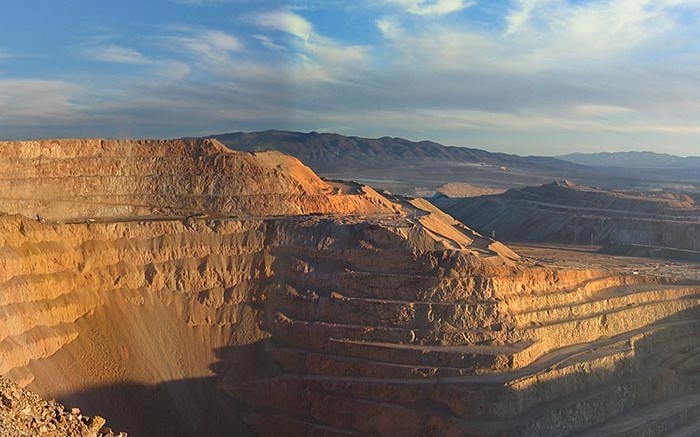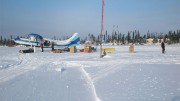Listening to the CEOs of the world’s largest gold miners at this year’s annual Denver Gold Forum in September, you couldn’t help but notice they all sang off the same songsheet, despite the challenges of their individual companies.
The top-four gold miners by production — Barrick Gold, Newmont Mining, AngloGold Ashanti and Goldcorp — are all seeing tangible benefits in 2015 from the past three years of management turnover, layoffs, asset sales, capital-expense deferrals, operational reviews and hard-won productivity gains. They’re also getting a big tailwind from falling oil prices and falling currencies of gold-mining countries like Canada, Australia and South Africa.
Gold prices have fallen 45% from their peak three years ago — seeming to have bottomed in the US$1,100 per oz. range — but all four majors have made their operations more resilient to low gold prices.
Kelvin Dushnisky, co-president of Barrick Gold, said his company’s restructuring “hasn’t been an exercise in tweaking around the edges … we’re a leaner and faster company now.”
Barrick started the process, he said, “by making free cash flow the key metric of this business. We also realized a strong balance sheet was one of the critical features underpinning Barrick’s early success, and we strayed from that in recent years.”
Barrick has cut US$2 billion from its expenses in 2015–16, and is 90% of the way to achieving its 2015 goal of trimming US$3 billion in debt by selling non-core assets, entering joint ventures and other partnerships, and building on free cash flow from operations.
Dushnisky said Barrick’s head office workforce has been cut 60% since 2013, from 370 to 150 people today, and management layers have been removed between head office and operations — or as Dushnisky describes it, there was an “unclogging of the arteries,” so that “the Barrick of today looks more and more like the Barrick of 15 to 20 years ago.”
Barrick is on track this year to produce 6.1–6.4 million oz. gold plus 480–520 million lb. copper, at all-in sustaining costs (AISC) of US$840–880 per oz.
He highlighted ongoing pit optimization at the Veladero mine in Argentina and increasing underground development at Cortez in Nevada, and noted Barrick considers its core assets to be Cortez, Goldstrike, Lagunas Norte, Pueblo Viejo, Veladero and Turquoise Ridge — accounting for 4 million oz. gold produced in 2014.
Gary Goldberg, president & CEO of Newmont Mining, said his firm’s strategy has been threefold for the last three years: delivering cost and efficiency improvements; lifting the portfolio value and balance sheet; and outperforming the sector in free cash flow and shareholder returns.
Having produced a steady 5 million oz. gold per year since 2012, Newmont has “delivered free cash flow for the last five quarters running,” Goldberg said, generating US$850 million.
Newmont’s AISC is at US$879 per oz. year-to-date, down 20% since 2012, thanks to the company’s “Full Potential” operational improvement program. Capex is also under control, with sustaining capital costs down 43% since 2012.
Goldberg says Newmont has lowered net debt by 35% since 2012, and raised US$1.3 billion by selling non-core assets.
Newmont still has its eye on growth, though, and is building two mines — Merian in Suriname and Long Canyon in Nevada — and has bought Cripple Creek and Victor in Colorado from AngloGold Ashanti.
Newmont is committed to keeping its dividend, with Goldberg noting that “Newmont has paid a dividend longer than most of its competitors have been in business.”
Srinivasan Venkatakrishnan, CEO of AngloGold Ashanti, said his company has used the low gold price as “an opportunity to reshape and transform the company”, which has 19 operations in nine countries, with a quarter of its production coming from South Africa.
“Mining is a long-term game, and we need to create and maintain that long-term optionality, which will be needed when the market turns,” he said. “Our focus is on quality and not quantity of production, and that is sacrosanct in this business.”
Venkatakrishnan noted that Anglo’s currency leverage has been “a natural shield” for the company, which is on track for 3.8 million to 4.1 million oz. gold production this year, with a 10% improvement in AISC to US$924 per oz.
Improving safety has been a concern for AngloGold, and the company has lowered the injury frequency rate by 65% since 2007 to a plateau of 7.5 per million hours in the first half of 2015.
He described the Obuasi mine in Ghana as having been “one of the hardest self-help measures” for AngloGold, as it “took a 120-year-old operation into snooze mode,” by retrenching the workforce and transitioning to limited operations at the end of 2014, even though it still has a high-grade, 27 million oz. resource.
AngloGold has invited Randgold Resources to become a joint-venture partner at Obuasi, which Venkatakrishnan said “needs a new, radical approach” to be redeveloped as a modern, mechanized operation.
He added that AngloGold is still looking for a partner for its Colombia portfolio.
Chuck Jeannes, president & CEO of Goldcorp, was perhaps the sunniest presenter, highlighting his firm’s growing production this year, declining AISC costs, lower capex and attractive portfolio of young mines and organic growth opportunities.
He noted Goldcorp is making free cash flow at current prices and has “one of the strongest balance sheets in the business,” with the only BBB+ rating.
“We’ve made good decisions on how to finance the company, and the result is that we’re left with a strong balance sheet, with low net debt. And because we’re generating free cash flow today, that balance sheet is getting stronger every day.”
Since bringing on two new mines, Goldcorp has boosted production 20% year-over-year this year, with full-year production in 2015 estimated at 3.3–3.6 million oz. gold — up from 2.4 million oz. gold in 2012 — plus significant by-product credits. AISC should be US$850–US$900 per oz. in 2015, down from the US$1,031 per oz. peak in 2013.
Jeannes highlighted the HG Young discovery at Goldcorp’s Red Lake mine. “We think it has significant potential — it’s about 2 km strike length traced so far. Its proximity to our existing infrastructure makes it exciting … we could impact production in the medium term without having to build a new mill and shafts.”




Be the first to comment on "Editorial: World’s biggest gold miners reap benefits of renewed discipline"